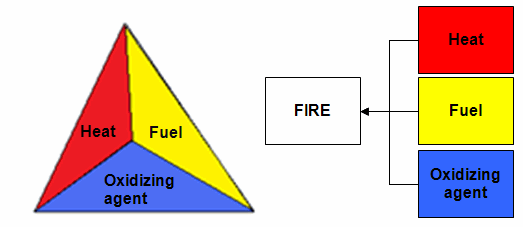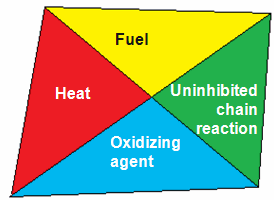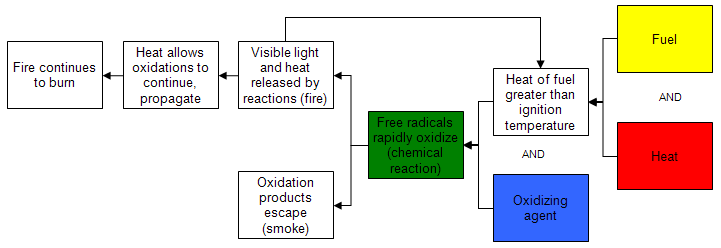Fire used to be simple. There was the fire triangle, which said to make a fire you need heat, fuel and oxygen. Easy, right? Unless you’re working in a vacuum, there’s pretty much always oxygen around, a match provided the heat, and all you needed to provide was some wood (or other flammable material, hopefully not valuable). Girl Scouts and Boy Scouts could explain it in the first grade. The root cause analysis was equally simple.

But then somebody took a closer look. Somebody who was perhaps not familiar with root cause analysis but who realized that if you had a solution (such as halon fire extinguishers) that did not directly address one of the causes (heat, fuel and oxygen), then there was something missing in your equation. The missing link was an uninhibited chain reaction. Halon fire extinguishers (as well as some other types) work by interfering with the chain reaction.

When we attempt to turn the fire tetrahedron (as the above diagram is named) into a visual root cause analysis (cause map), it’s not quite as simple as adding “uninhibited chain reaction” as a fourth case pointing directly to fire. What actually happens in a fire is that a fuel is heated to the point of ignition. At this point, it dissociates and produces free radicals. The free radicals combine with the oxygen. This reaction releases heat and visible light (the fire) and reaction products like CO2 (smoke). If the heat released is sufficient to keep the fuel above the ignition point, the fire continues. This is the uninhibited chain reaction. So our final root cause analysis looks something like this:

Bring Cause Mapping® Root Cause Analysis training to your site
Schedule a workshop at your location to train your team on how to lead, facilitate, and participate in a root cause analysis investigation.
